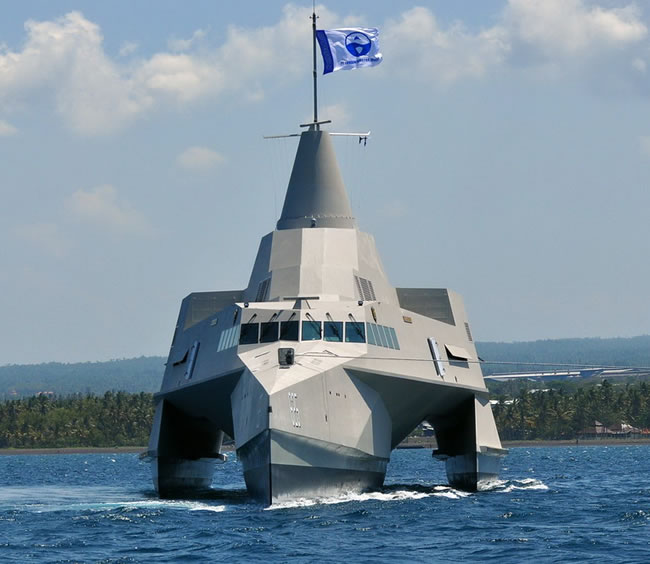

North Sea Boats launched the first of four advanced, stealthy, 63 meter trimaran patrol boats for the Indonesian Navy on August 31, 2012. Following the completion, extensive sea trials and testing commencing next month, the KRI KLEWANG is is expected to be fully operational 2013. All four vessels are scheduled for delivery by 2014.
Unfortunately, Klewang was destroyed by a fire tree weeks after its launching, while moored at the naval port in Banyuwangi, East Java for maintenance. No casualties have been reported but the new vessel was lost.
The new vessel to be named KRI Klewang (after a traditional Indonesian single edged sword) was launched at Banyuwagni, in Indonesia. Following the official launching the vessel will be fitted with mission systems and weapons, including a remotely controlled gun turret and anti-ship missiles. The four vessels are built at the PT Lundin shipyard in East Java.
Premium subscribers can read the full version of this article, including the new photo gallery. Interested?
The vessel is powered by four MAN V12 diesel engines, driving multiple MJP 550 water jets, located on the three for maximum propulsive thrust and maneuverability. The vessel can develop a ‘sprinting’ maximum speed of 35 knots. Cruising speed is 16 knots and the stated operational range is over 2000 nautical miles.
The Klewang is armed with concealed gun turret, missile launchers and small arms posts. Trimarans offer very stable weapons platforms, and can carry various Missile systems; including Type 705 (up to 8), RBS15, Penguin or Exocet, and 40-57mm Naval Guns, or a CIWC (Close In Weapon System). These can be mounted high on the superstructure, giving better range and firing arc. Sensors can also be installed high up without concerns for stability. This first ship will carry a turnkey system delivered by CSOC and CPMIEC China, including rapid fire CIWS, combat control and missile systems. The exact configuration of this system is still classified.
Accommodation is provided for a complement of twenty nine (officers and crew) on three internal decks (including bridge and combat control centre), with facilities and equipment also provided for deployment of special forces troops, including an 11m high speed 50 knot RIB, also manufactured and supplied by North Sea Boats.
















